LAB REPORT
Science and Technology Making Headlines
Nov. 10, 2017

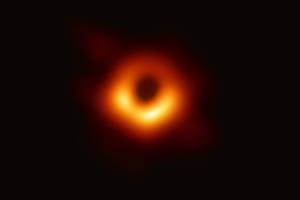
A black hole’s gravity can heat up the disk around it to shine brightly, but what powers the jets some of them produce remains a mystery. Image courtesy of NASA.
Cosmos and the jets
Black holes are so massive that nothing, not even light, can escape once it gets close enough. A great mystery for scientists is that there’s evidence of powerful jets of electrons and protons that shoot out of the top and bottom of some black holes. Yet no one knows how these jets form.
A computer code called Cosmos now fuels supercomputer simulations of black hole jets and is starting to reveal the mysteries of black holes and other space oddities.
“Cosmos, the root of the name, came from the fact that the code was originally designed to do cosmology. It’s morphed into doing a broad range of astrophysics,” explained Chris Fragile, a professor at the College of Charleston. Fragile helped develop the Cosmos code in 2005 while working as a postdoctoral researcher at Lawrence Livermore National Laboratory (LLNL), along with Steven Murray (LLNL) and Peter Anninos (LLNL).
Cosmos provides astrophysicists an advantage because it has stayed at the forefront of general relativistic magnetohydrodynamics (MHD). MHD simulations, the magnetism of electrically conducting fluids such as black hole jets, add a layer of understanding but are notoriously difficult for even the fastest supercomputers.

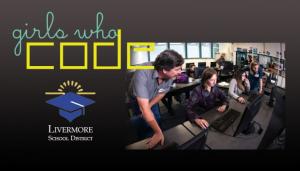
LLNL software engineer Russ Fleming, left, and computer scientist Danielle Sikich, right (standing), helped facilitate the Girls Who Code club at Granada High School in Livermore in fall 2016. Photo by Randy Wong
Girls can do anything
Lawrence Livermore and Sandia national laboratories aren’t the only place you’ll find physicists, chemists and engineers hanging out. Increasing numbers of them are bringing their unique talents into Livermore’s classrooms, where they’re showing kids what real scientists look like and getting them excited about the natural world.
Livermore middle and high school students have access to professional local mentors through on-campus Girls Who Code clubs. Professionals from Lawrence Livermore Lab approached the district last year to propose the idea of working with the clubs, which also include boys.
“Our motivation was two-fold,” said Marcey Kelley, who along with Emily Brannan, both computation scientists at LLNL, oversees the 22 volunteer mentors in the program. “We wanted to give an opportunity for our employees to give back to the community. We also want to improve our numbers for women in STEM (science, technology, engineering, math). You have to start early to be able to do that. The really cool thing is that a lot of the volunteers are in their very early careers, many recent grads. They’re mostly women, but some men. I think a lot of the younger women especially . . . are really passionate about being role models and inspiring the younger generation.”

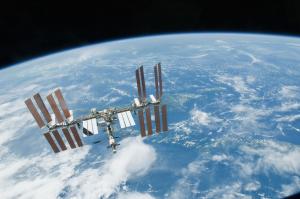
The International Space Station is one location where scientists are studying health management of astronauts on extended space missions.
Tracking radiation in space
Lawrence Livermore is one of several agencies receiving a grant from NASA’s Transitional Research Institute to help to solve some of the challenges of health management for astronauts on extended space exploration missions,
The idea of the study is to allow the scientists to see how cells respond to certain drugs or environmental exposure, allowing for the development of personalized therapies.
The study is conducted via organ-on-a-chip, where a chip provides a platform for studying a model of the human GI tract that mimics the actual conditions and processes that occur within the body.

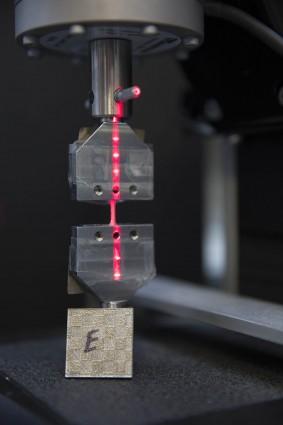
Researchers say the ability to 3D print marine grade, low-carbon stainless steel (316L) could have widespread implications for industries such as aerospace, automotive, oil and gas.
Not your ordinary stainless steel
Lawrence Livermore researchers have achieved a breakthrough in 3D printing 316L, a common form of marine grade stainless steel that promises an unparalleled combination of high-strength and high-ductility properties.
Marine grade stainless steel is widely utilized due to its performance in corrosive environments and for its high ductility, a property undermined by conventional techniques for strengthening this class of material.
LLNL researchers, along with collaborators at Iowa-based Ames National Laboratory, Georgia Tech University and Oregon State University, believe their breakthrough has overcome this challenge.
The methodology could quickly lead to widespread 3D printing of stainless steel components in the aerospace, automotive and oil and gas industries, where materials need to tolerate extreme force in harsh environments.

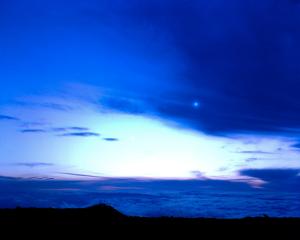
A view of Starfish Prime from Maui Station, July 9, 1962.
Check out the manmade aurora borealis
On Nov. 4, 1962, the United States conducted its final atmospheric test of a thermonuclear weapon. Blasted into the outer atmosphere — high above a South Pacific atoll, 860 miles southwest of Hawaii—the effort, called Tightrope, was part of a larger series of high-altitude atomic-weapons tests conducted between June and November of that year called Operation Fishbowl.
The first attempts of the Operation Fishbowl tests took place in June 1962, but didn’t succeed, due to radar-tracking issues and rocket-engine malfunction. But on July 9, 1962, the United States found success with its Starfish Prime test.
Greg Spriggs, 66, witnessed Starfish Prime when he was just 11 years old. Stationed with his family on Midway Island, 400 miles north of Johnston Island, Spriggs’ father took the family outside one evening and told his children to look up into the sky. “The sky lit up like it was noon: a bright white flash, then a whole series of colors. Pure reds and yellows and blues and indigos and violets,” Spriggs said, who would grow up to design nuclear weapons.
Spriggs works as a nuclear weapon physicist at Lawrence Livermore National Laboratory, where he directs the Film Scanning and Reanalysis Project, an effort to digitize and review the millions of still and moving images of U.S. nuclear tests taken by both military and civilian contractor photographers. The artificial aurora borealis Spriggs witnessed as a child was due to millions of charged particles moving along the magnetic lines of the earth.





